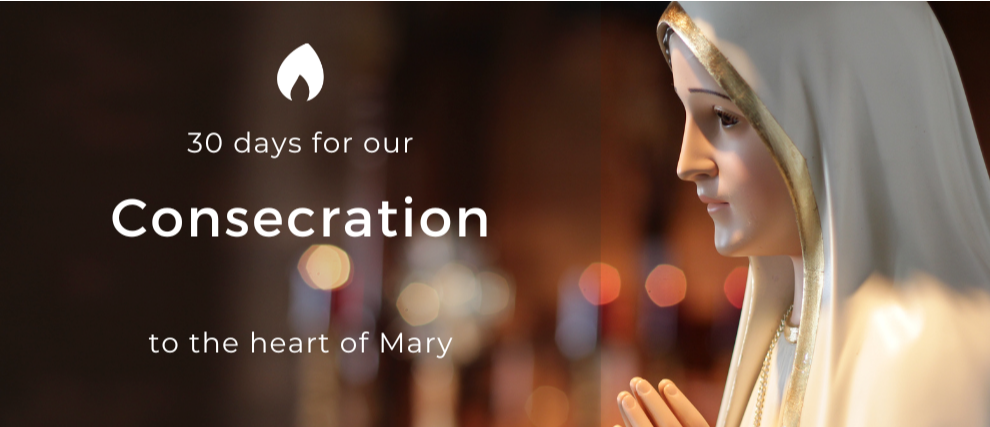The Rosary: A Devotion Carried by the Saints
Since the Middle Ages, many saints have spoken to us about the spirituality of the rosary. The meditation of the rosary is now practiced through various means, including social media, the Rosario app, and various sanctuaries by following in the footsteps of the saints who saw the Virgin at Lourdes or Fatima, for example.
Saint Dominic, the Patron Saint of the Rosary
Saint Dominic was born in Spain in 1170. Driven by mission, he left his country, passed through the south of France to evangelize, and it was there that he received the rosary given by Our Lady. Pope Innocent III sent him to France to preach to the heretics. Joined by other brothers, Dominic was no longer alone in his mission of evangelization. Like Saint Francis of Assisi, he contributed to the renewal of the Catholic Church with the creation of his order, approved by the pope in 1216.
The Gift of the Rosary
The Virgin holds an important place in Dominic's life, as she asked him to teach the rosary. Since then, Mary has held a special place within the Dominican order. Many paintings illustrate the Virgin giving the rosary to Saint Dominic. This apparition is recounted by Blessed Alain de la Roche.
Near Toulouse, Saint Dominic saw the Virgin Mary. She asked him to make her psalter known, that is, the rosary. The psalter of Mary is the first name given to the rosary because monks recited 150 Hail Marys in reference to the 150 psalms in the Bible.
The Virgin told him: “Spread my Rosary; it will be the remedy for so many evils.” Mary also explained that the rosary is the most effective weapon to combat heresy.
Saint Dominic obeyed the Virgin's instructions and tirelessly taught the rosary to those he met on his journey.
Our Lady of the Rosary and the Dominicans
This order, founded in the Middle Ages, continues its mission of spreading the rosary today, for example, with the rosary pilgrimage to Lourdes.
Benedict XVI, in a catechesis dedicated to Saint Dominic, exhorts us to turn to the Virgin: “May Our Lady of the Rosary, patroness of the Dominican Order, help you discover the presence of Christ in your life and follow Him generously every day.”
The Saints Who Contributed to the Development of the Rosary
The Dominicans contributed to the spread of the rosary, but they are not alone. Other saints have also been messengers of the Virgin by spreading the rosary around them.
Alain de la Roche
A Breton and Dominican, Blessed Alain de la Roche took up the mantle of Saint Dominic. He spread the rosary in various regions of France and neighboring countries after defending a thesis on the importance of meditating on the Hail Mary. Alain de la Roche recounts how Saint Dominic received the rosary from the hands of the Virgin.
Pauline Jaricot
After the terror of the French Revolution, a 26-year-old woman from Lyon, Pauline Jaricot, undertook to revive the faith of her contemporaries. She created the Living Rosary with a group of 15 people. Each of the 15 people committed to reciting a decade of the rosary daily. Today, this initiative by Pauline Jaricot still exists through the Living Rosary teams and with the Rosario app, created at the time of her beatification in 2022.
The Saints of Marian Apparitions
In France and around the world, the Virgin has appeared regularly over the years. Mary has always emphasized the importance of prayer and the rosary. Praying for sinners and for peace: these are the prayer intentions given by the Virgin to the children she addressed.
Saint Catherine Labouré
In 1830, Catherine Labouré was called to the chapel of her convent. The Virgin, seated in the priest's chair, awaited Catherine. She gave Catherine the mission to have a medal bearing her image printed. This medal can be found on the rosaries we buy or that we make ourselves. Wherever the Virgin has appeared, regardless of the message, today homage is paid to her by reciting the rosary, as is the case in the chapel on Rue du Bac in Paris.
Saint Bernadette
On February 11, 1858, the Virgin Mary appeared for the first time to Bernadette at the grotto of Lourdes. She silently prayed her rosary. Saint Bernadette followed the example of the Beautiful Lady and took the rosary she had in her pocket. Bernadette often said during her life that she knew only her rosary. With this prayer, she felt close to the Virgin even after the apparitions, and she prayed for sinners as the Lady of the grotto asked her to. Even today, pilgrims follow in Bernadette's footsteps by fervently reciting the rosary every day in all languages at Lourdes in front of the grotto. We can follow the Lourdes rosary every day on the sanctuary's website.
The Saints of Fatima
In 1917, the First World War ravaged the countries involved in the conflict. In Portugal, at Fatima, the Virgin appeared to three little shepherds: Jacinta, Lucia, and Francisco. She appeared with a rosary on her wrist. The Virgin taught the children to pray. She also explained to them that they would suffer, but prayer, especially the rosary, would be their strength. The Virgin also invited the faithful to pray for peace and to entrust themselves to her Immaculate Heart.
The Work of the Popes on the Rosary
The popes, since the approval of the rosary by Pope Sixtus IV, have not ceased to speak of the benefits of the rosary. Through various writings, they have invited the faithful to turn to this Marian prayer.
Leo XIII
During his pontificate, which lasted 25 years from 1878 to 1903, Pope Leo XIII devoted a great number of his writings to the rosary. This earned him the nickname “the Pope of the Rosary.” Through his various positions during a troubled century and amidst ongoing discoveries and progress, Leo XIII affirmed the position of the Church and Catholics through various encyclicals on society and through the 11 encyclicals on the rosary. His teaching allowed the faithful to always turn with confidence and devotion to the Mother of Christ.
Saint John Paul II
Karol Wojtyla, the Polish pope, had a great devotion to the Virgin Mary from a young age. The Virgin always watched over him, especially when the bullet that struck him on May 13, 1981, could have cost him his life. John Paul II often repeated that the rosary was his favorite prayer. In 2002, he completed the rosary, which had 15 mysteries, with the Luminous Mysteries. Since then, reciting the complete rosary involves meditating on the 20 mysteries. In his apostolic letter Rosarium Virginis Mariae, the pope recalls the method for reciting the rosary and allowing oneself to be touched by Christ and His mother through the different mysteries: joyful, sorrowful, luminous, and glorious.
The Personalities Who Worked to Spread the Rosary
Many personalities over the centuries, such as the holy Curé of Ars and Patrick Peyton, have worked or are working to spread the rosary today. Making the rosary known through various initiatives is a beautiful act of evangelization, whether by participating in the Living Rosary teams inspired by Pauline Jaricot or through social media. Pope Francis regularly reminds us of the importance of the rosary and all the good it can do in today's world.
Pray the Rosary with the Saints on Hozana and Download Rosario
You can find the saints on Hozana by joining various prayer communities. You can participate in to ask for her intercession. You can . The visionary of Lourdes can help you discover the different mysteries that make up the rosary. The Rosario app can also help you pray the rosary within a group or individually.

